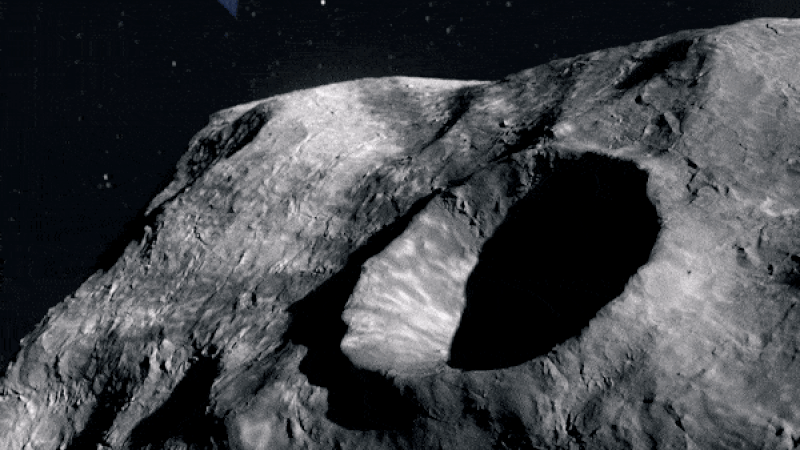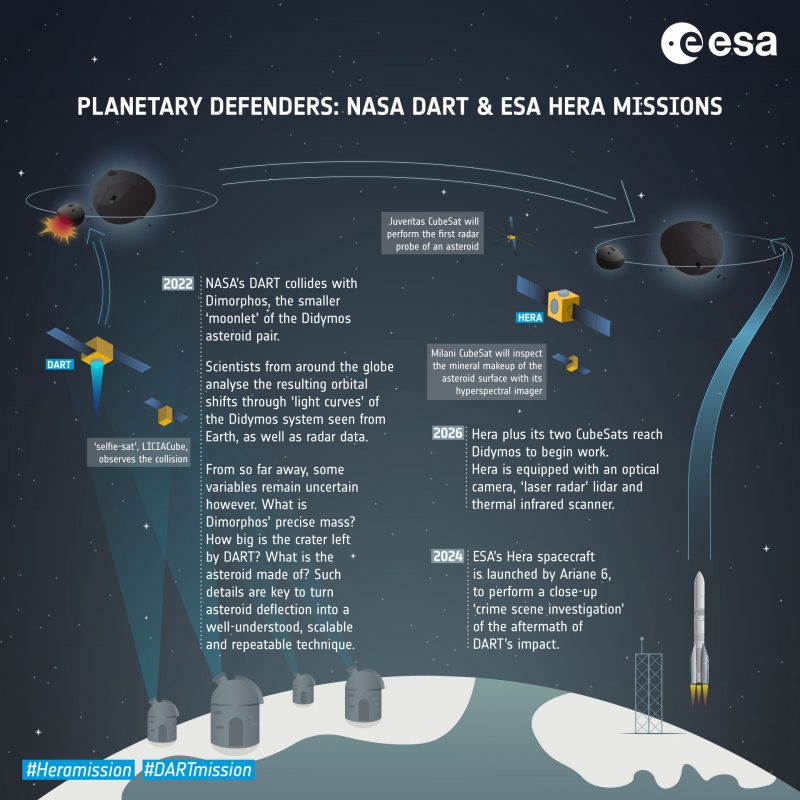
You heard about the NASA mission to strike and move an asteroid? It’s a test run in what’s increasingly being called planetary defense. The NASA mission is called DART, and it successfully launched to space recently, on November 24, 2021. It’s due to arrive at its asteroid target in late 2022. The tiny craft will strike the little asteroid, in the process breaking into smithereens. Astronomers on Earth hope to measure a tiny shift in the asteroid’s orbit due to DART’s impact.
But the asteroid itself is small. Space is vast. And these measurements are difficult. So – as part of the plan – the European Space Agency (ESA) will launch a second spacecraft to DART’s target asteroid. The Hera mission will follow in DART’s footsteps, but at a safe distance. It’ll launch in 2024 to conduct a thorough “crime scene investigation,” ESA quipped in a statement released in November 2021. That more thorough study of DART’s effect on the asteroid will commence when Hera arrives at the asteroid’s vicinity in 2026.
The asteroid target, by the way, is a moonlet of a slightly larger asteroid. Neither asteroid is on a collision course with Earth. The primary asteroid is Didymos, and the moonlet is called Dimorphos.
EarthSky 2022 lunar calendars now available! They make great gifts. Order now. Going fast!
Meet the Hera mission
The original plan was for DART and Hera to work as a double spacecraft, but over the years of planning, they became separate missions. Ian Carnelli of ESA’s Hera mission said:
The pair are designed to function separately … their overall science return will be boosted greatly by being able to combine their results.
Scientists will monitor the 2022 DART impact from back at Earth, but earthly observations won’t tell scientists many things about Dimorphos that Hera can learn from close range. Hera will inspect the asteroid moonlet to determine its precise mass, what it’s made up of, whether it’s solid or a loose pile of rubble, and what exactly the DART impact crater looks like.
Hera’s contributions
Hera will help scientists understand and repeat the DART mission. And likely repeat and repeat until scientists feel sure Earth is in a good defensive position, in the event that a dangerous asteroid tracking toward Earth needs to be shoved out of our path.
Besides the main spacecraft, Hera will deploy two shoebox-sized satellites. Milani is in charge of spectral surface observations, and Juventas will take the first radar soundings in the heart of an asteroid.

The Hera spacecraft and its mini satellites will arrive at Didymos and Dimorphos in 2026. But, for now, they’re still in the design and development phase. Scientists from around the world are collaborating on the new mission. This kind of collaboration will be important if a dangerous space object is ever streaking toward Earth. As Patrick Michel, Hera’s principal investigator, said:
International cooperation is an essential element in planetary defense endeavors.

Bottom line: The Hera mission will take over after DART impacts an asteroid. Hera will analyze the impact area and learn more about asteroids Didymos and Dimorphos.











